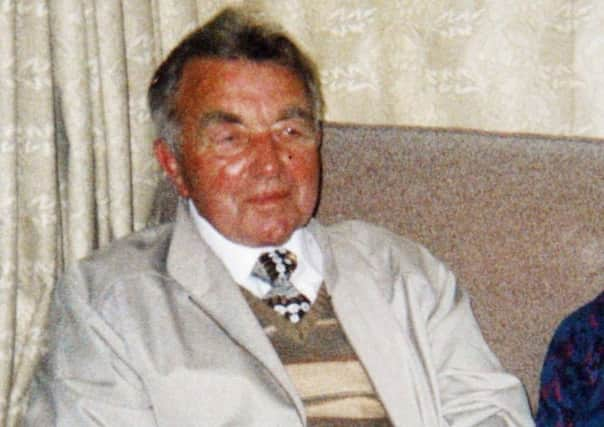Villagers asked how to spend windfall left by former Nazi soldier


German soldier Heinrich Steinmeyer was held at the former Cultybraggan prisoner of war camp near Comrie during the Second World War.
Advertisement
Hide AdAdvertisement
Hide AdThe camp was built more than 75 years ago and between 1944 and 1947 housed around 4,000 German prisoners of war.
The 19-year-old soldier, who was captured in France, was eventually held in the camp where he was surprised by the reaction of local people.
Throughout his captivity there he was struck by the kindness shown to him, which he had not expected, and after the war ended he returned to Comrie and made lasting friendships with local people.
He repaid the debt by leaving nearly £400,000 to the community in his will after he died in 2013, aged 90.
In line with the wishes of the former Waffen SS soldier, the sum will be used to benefit local elderly people.
Details of the proposed legacy funded developments will be presented for discussion at a public meeting in the village next week
Local people are also needed to stand for election to a committee to manage how the community’s choices are implemented.
Advertisement
Hide AdAdvertisement
Hide AdAn interim committee has gathered local views, with nearly 300 returning survey forms.
Support for spending in five areas emerged - support and care, mobility and transport, social places/village venues, the village environment and leisure/activities.
The interim committee has finalised 20 developments for funding and will be delivering papers for a community vote on the proposals to households at the start of next month.
Murray Lauchlan, interim committee chairman, said: “The Steinmeyer legacy provides a great opportunity to improve the lives of Comrie older people in a variety of ways.
“People in Comrie are about to be asked to make choices about what improvements the bequest should fund.”
• READ MORE: Interview: Heinrich Steinmeyer - Former POW
Mr Steinmeyer grew up in Silesia, now part of Poland, came from a very poor family and was working as an apprentice butcher before joining the SS at the age of 17.
He was captured in the fight for a bridge in Caen and classified as a category “C” prisoner - or hardline Nazi - when he was dispatched to Perthshire.
Advertisement
Hide AdAdvertisement
Hide AdHe said previously that Cultybraggan was a holiday camp “compared to fighting or being a PoW in Russia”, adding: “The whole place was so beautiful. It went straight to my heart, and I thought, ‘why have I been fighting this bloody war’?
“I was young and had been brought up in Hitler’s system. I was part of the Hitler Youth, we were all young boys in our Panzer division.
“When I was brought to Scotland I realised the Scots were no different from us. We should never have been fighting each other.”
There are a total of 80 Nissen huts at Cultybraggan, or Camp 21, which was dubbed “the Black Camp of the North” because it was home to captured Nazi officers from the SS, Wehrmacht, Luftwaffe and Marine Corps. Polish soliders were deliberately used as camp guards, because they hated the Germans for invading their country.